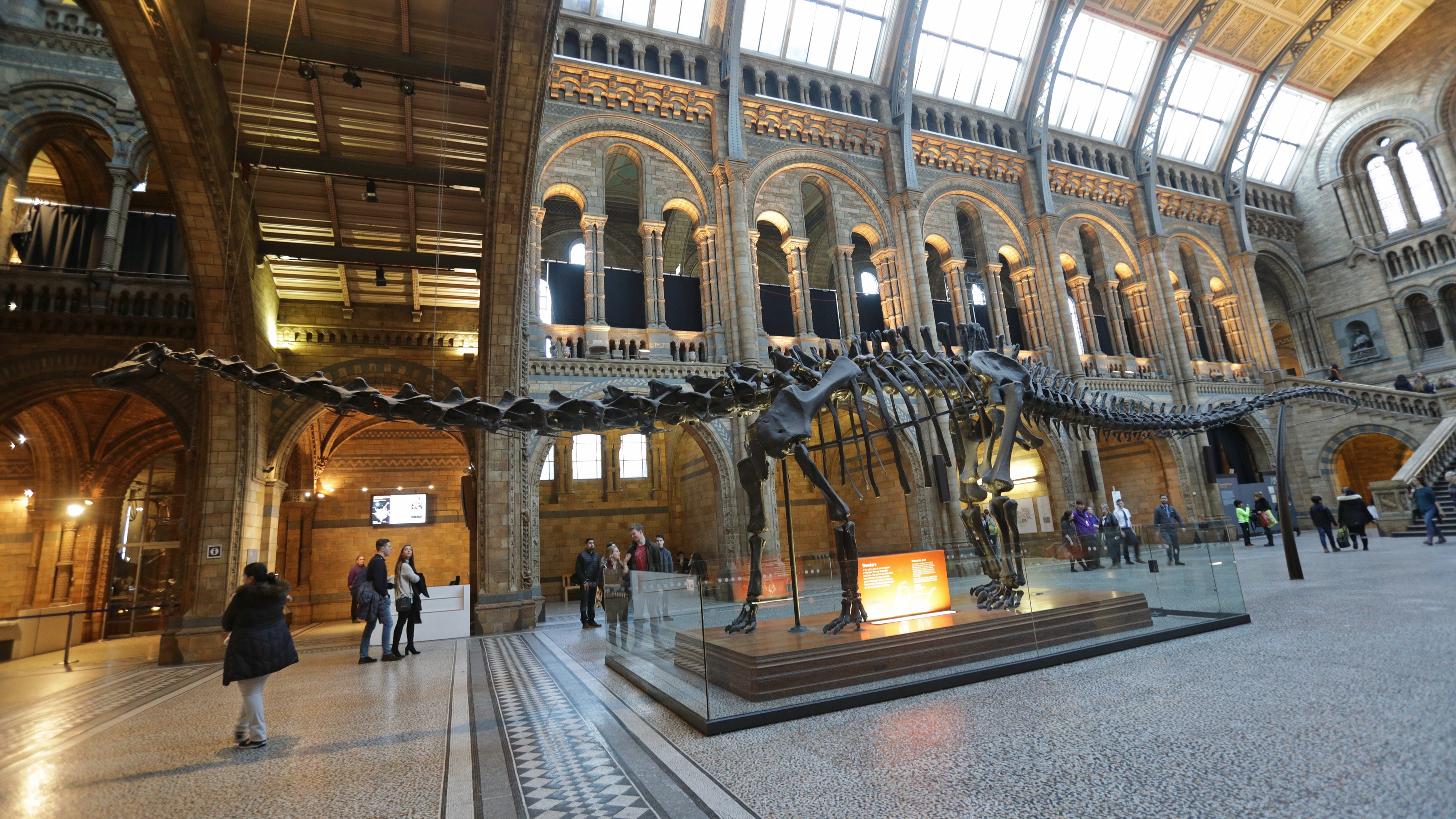Have you ever wondered what the world looked like millions of years ago? Or what creatures once roamed the Earth before humans appeared? If so, the Museum of Natural History in London holds the answers, offering a captivating journey through time and across the globe. This iconic institution, housed in a magnificent Victorian building, isn’t just a repository of fascinating specimens; it’s a living, breathing testament to the remarkable diversity of life on our planet.

Image:
From towering dinosaur skeletons to delicate butterflies, the museum’s collection encompasses an astounding array of natural wonders. The sheer scale of the exhibits, coupled with cutting-edge technology and engaging narratives, ensures an unforgettable experience for visitors of all ages. The Museum of Natural History is more than just a place to see fascinating objects; it’s a platform for understanding our planet, its history, and our place within the grand scheme of life.
Exploring the Deepest Depths: The Hintze Hall and the Whale
Step inside the iconic Hintze Hall, the grand entrance to the museum, and you’ll be greeted by a sight that takes your breath away: a colossal blue whale skeleton suspended from the vaulted ceiling. Its immense size serves as a poignant reminder of the awe-inspiring scale of nature and the power of the oceans it called home.
The blue whale, a majestic creature that once roamed the world’s seas in vast numbers, now faces threats from human activities. Its presence in the Hintze Hall serves as a powerful symbol of conservation efforts, highlighting the importance of protecting these magnificent creatures and the delicate ecosystems they inhabit.
Journeying Through Time: The Dinosaur Gallery
For many visitors, the Dinosaur Gallery is the highlight of the museum. Here, you can walk amongst colossal skeletons of iconic prehistoric creatures like Tyrannosaurus Rex and Triceratops, their imposing forms and sharp teeth transporting you millions of years back in time.
The gallery’s exhibits not only showcase the grandeur of these extinct giants but also delve into the science behind their evolution, behavior, and extinction. Through engaging interactive displays and insightful information panels, the Museum of Natural History allows you to unravel the mysteries of prehistoric life.
A World of Diversity: The Earth Galleries
The Earth Galleries provide a window into the vastness and complexity of our planet. Through displays of rocks, minerals, and fossils, you can delve into the Earth’s history, from its fiery volcanic origins to the formation of the mountains and oceans we know today.
The museum’s collection includes stunning examples of crystals, meteorites, and rare gemstones, showcasing the beauty and diversity of our planet’s natural resources. These exhibits serve as a reminder of the delicate balance of Earth’s ecosystems and the importance of responsible stewardship for future generations.

Image: www.nhm.ac.uk
The Wonder of Insects: The Butterfly House
If you’re looking for a break from the grandeur of dinosaurs and whales, the Butterfly House offers a mesmerizing escape. Here, hundreds of colorful butterflies flit amongst vibrant tropical plants, creating a vibrant, living spectacle.
This immersive exhibit allows you to observe these delicate creatures up close, marveling at their intricate patterns and graceful flight. The Butterfly House is not only a visually stunning experience but also a testament to the intricate beauty and resilience of nature’s smallest wonders.
Beyond the Exhibits: Engaging with Science
The Museum of Natural History actively encourages visitors to engage with science, offering a range of behind-the-scenes tours, workshops, and educational programs. These experiences provide a deeper understanding of the museum’s research, conservation efforts, and the ongoing process of scientific discovery.
For example, you can participate in a hands-on fossil preparation workshop, where you get to clean and examine real fossils, or attend a talk by a leading scientist working on the cutting edge of research. These interactive experiences make the museum a vibrant hub of scientific learning and discovery.
A Global Perspective: Understanding Our Shared Future
The Museum of Natural History stands as a testament to the interconnectedness of life on Earth. By showcasing the wonders of the natural world from diverse regions across the globe, it encourages a sense of global responsibility and understanding.
Through its exhibits, the museum highlights the importance of preserving threatened species, protecting biodiversity, and addressing pressing environmental challenges. By connecting with the past, present, and future of our planet, it empowers visitors to become active stewards of the natural world.
The Museum of Tomorrow: Adapting to a Changing World
The Museum of Natural History is constantly evolving, embracing new technologies and approaches to engage with its audience. Recent renovations have introduced digital interactive displays, virtual reality experiences, and immersive film screenings, all of which enhance the visitor experience and deepen the understanding of the exhibits.
The museum also plays a vital role in promoting scientific literacy and encouraging the next generation of scientists and environmental champions. By making science accessible and inspiring, it ensures that the legacy of the Museum of Natural History will continue to enrich lives for generations to come.
Museum Of Natural History London
Conclusion
The Museum of Natural History in London is more than just a collection of fascinating objects; it’s a portal to the past, a window to the present, and a beacon for the future. It offers an inspiring journey of discovery, sparking curiosity, and encouraging a deep appreciation for the wonders of the natural world. Whether you’re a seasoned naturalist or simply curious about the Earth’s history and its inhabitants, a visit to the Museum of Natural History is an experience that will stay with you long after you leave its grand halls. So, step into the world of wonder and learn the secrets the museum holds—you might be surprised by the beauty and complexity of the natural world, and the vital role we all play in its preservation.



/GettyImages-173599369-58ad68f83df78c345b829dfc.jpg?w=740&resize=740,414&ssl=1)


